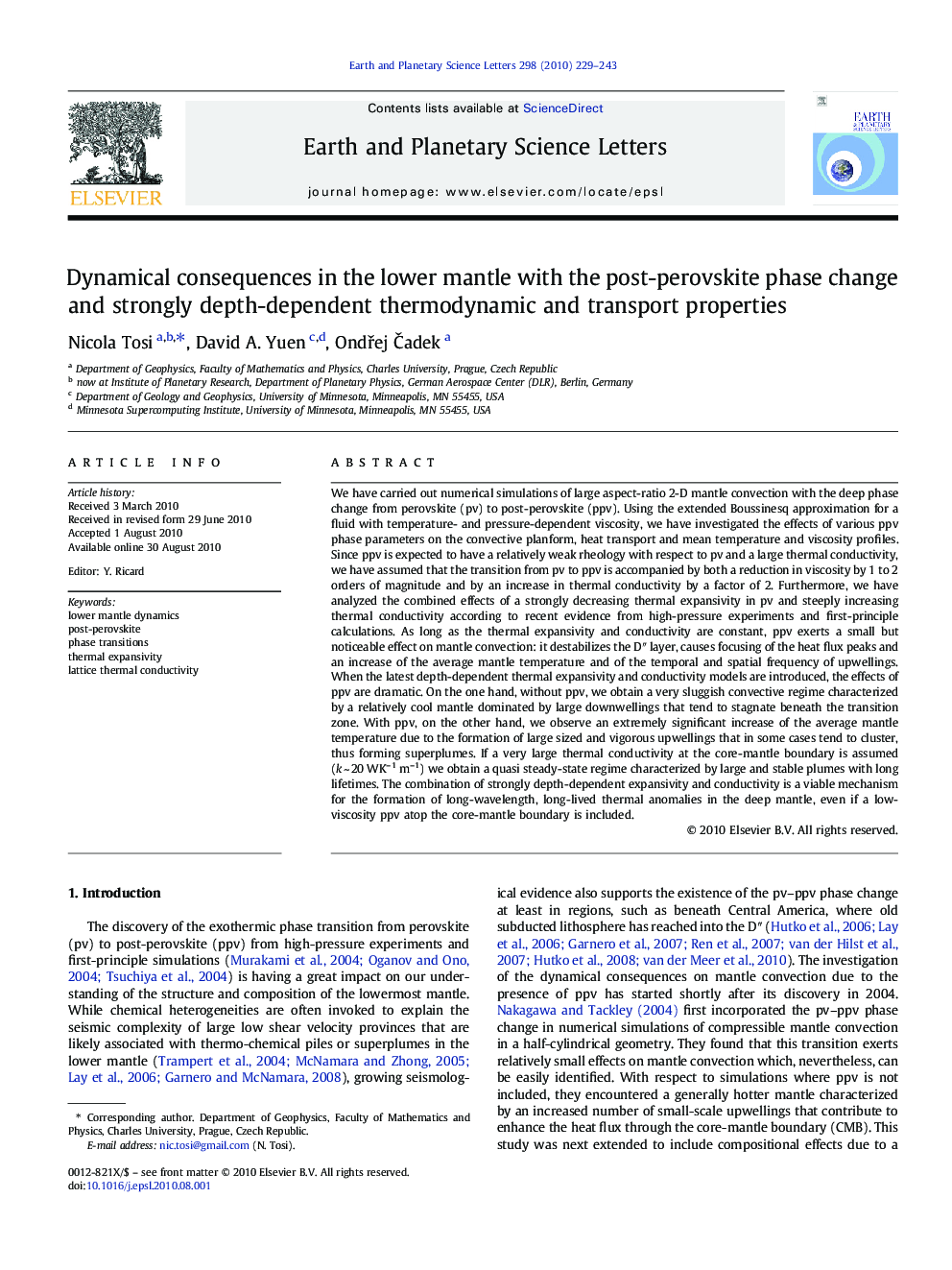| کد مقاله | کد نشریه | سال انتشار | مقاله انگلیسی | نسخه تمام متن |
|---|---|---|---|---|
| 4678265 | 1634844 | 2010 | 15 صفحه PDF | دانلود رایگان |

We have carried out numerical simulations of large aspect-ratio 2-D mantle convection with the deep phase change from perovskite (pv) to post-perovskite (ppv). Using the extended Boussinesq approximation for a fluid with temperature- and pressure-dependent viscosity, we have investigated the effects of various ppv phase parameters on the convective planform, heat transport and mean temperature and viscosity profiles. Since ppv is expected to have a relatively weak rheology with respect to pv and a large thermal conductivity, we have assumed that the transition from pv to ppv is accompanied by both a reduction in viscosity by 1 to 2 orders of magnitude and by an increase in thermal conductivity by a factor of 2. Furthermore, we have analyzed the combined effects of a strongly decreasing thermal expansivity in pv and steeply increasing thermal conductivity according to recent evidence from high-pressure experiments and first-principle calculations. As long as the thermal expansivity and conductivity are constant, ppv exerts a small but noticeable effect on mantle convection: it destabilizes the D″ layer, causes focusing of the heat flux peaks and an increase of the average mantle temperature and of the temporal and spatial frequency of upwellings. When the latest depth-dependent thermal expansivity and conductivity models are introduced, the effects of ppv are dramatic. On the one hand, without ppv, we obtain a very sluggish convective regime characterized by a relatively cool mantle dominated by large downwellings that tend to stagnate beneath the transition zone. With ppv, on the other hand, we observe an extremely significant increase of the average mantle temperature due to the formation of large sized and vigorous upwellings that in some cases tend to cluster, thus forming superplumes. If a very large thermal conductivity at the core-mantle boundary is assumed (k ~ 20 WK–1 m–1) we obtain a quasi steady-state regime characterized by large and stable plumes with long lifetimes. The combination of strongly depth-dependent expansivity and conductivity is a viable mechanism for the formation of long-wavelength, long-lived thermal anomalies in the deep mantle, even if a low-viscosity ppv atop the core-mantle boundary is included.
Journal: Earth and Planetary Science Letters - Volume 298, Issues 1–2, 15 September 2010, Pages 229–243